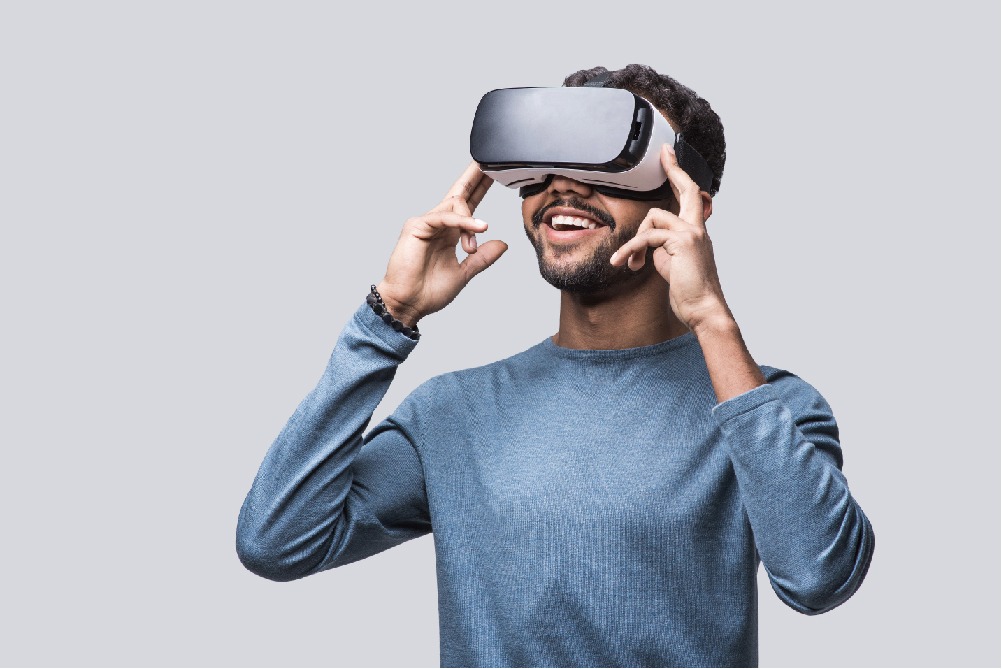The Metaverse: What It Means for Brands, Retailers, and Commerce Professionals Today
February 15, 2022

The metaverse is quickly becoming a household topic among brands, retailers and consumers alike. In this article, we explore how the emergence of the metaverse affects brands, retailers, and commerce professionals today, and how the full impact of this new era for the internet might impact these roles in the future.
Walmart Entering the Metaverse
At the end of 2021, big box and e-commerce giant Walmart took public steps to enter the metaverse when they filed multiple new trademarks indicating their intent to make and sell virtual goods, offer a virtual currency and sell NFTs.
This step signals a significant shift for the metaverse. America’s most recognized superstore positioning itself on this platform proves that brands and retailers will soon have a prominent role to play in virtual and augmented reality environments.
Brands recognize the value of an omnichannel presence. Thanks to global shutdowns resulting from the pandemic, retailers adapted to a new way of selling to the consumer. According to 1WorldSync’s 2021 Consumer Product Content Benchmark Report, 87 percent of consumers purchased items online they previously bought in-store. This omnichannel acceleration reshaped how brands and retailers market to the consumer.
With the lines already blurred between in-store and online shopping, the metaverse and its effect on brands and retailers will further inform marketing strategies and shopping habits both at present and in the future.
NFTs and Brand Opportunity
Non-fungible tokens enable brands to engage with users in an entirely new way through the metaverse. NFTs represent digital assets or virtual goods that are verified through blockchain technology, enabling brands to authenticate these goods to the consumer.
For the retailer, NFTs present a unique branding opportunity. Marketers want to target and keep Millennials and Gen-X engaged with their products and their brand. Their presence on the metaverse allows them to connect with these demographics in a new and effective way.
The clothing brand Zara is capitalizing on the branding opportunities afforded by listing NFTs. They have launched a collection that is sold in-store as well as in their virtual shops in their metaverse, Zepeto. Zara has identically priced both collections, creating the idea of a seamless transition between what a user wears on their physical body and what their metaverse avatar wears.
The choice to list the twin collections cultivates brand recognition wherever their user goes: online, in-store, and now in the virtual world. 2021 1WorldSync research found that nearly 7 out of 10 shoppers say a brand’s online presence compels them to seek out products when shopping in-store. For Zara, this means that metaverse engagement leads not only to sales of their NFTs, but it also increases the probability that a consumer will shop with them in-store.
By selling a piece of clothing as an NFT, Zara –– and other brands like it –– aim move more product through both in-store and e-commerce channels.
Brands and retailers may be wise to follow this example and optimize brand opportunities through the metaverse. While the commercial applications of the metaverse are still in their infancy, consumers are already spending dollars on NFTs and their corresponding real-world goods.
Brand Storytelling, AR, and the Metaverse
Knowing and telling your brand’s story is the key to effective engagement with the consumer. Brand storytelling through AR has already gained major traction with mobile e-commerce. And as the metaverse evolves, AR storytelling will inevitably evolve with it.
AR has revolutionized the way brands interact with consumers. It puts products into the hands of users and allows them to see how they might utilize goods in their homes before ever making a purchase. The metaverse takes AR to a new level by totally immersing consumers in a virtual world where they can examine and evaluate goods more intimately than ever.
Wearable AR devices will put users in the metaverse, blurring the lines between virtual reality and the physical world in a way like we haven’t seen before.
Wearables allow users to enter the metaverse and see that world through the first-person lens, potentially shattering the line between physical and e-commerce. This intimate interaction provides brands with a unique opportunity to connect with consumers wherever they are – from the store aisle to their living rooms – with personalized product content experiences.
Additionally, the metaverse allows brand creators a new space for showcasing the how and why behind their brand. These brands can lead the consumer through a highly detailed and highly engaging storytelling experience that informs, endears, and positively influences purchase decisions.
Succeeding in the Metaverse
Let’s be clear: It may take years if not longer before the most relevant metaverse use cases solidify, but the impact of early adoption on a brand’s success cannot be overstated. If retailers can understand how to engage in the metaverse hand-in-hand with their trading partners, they open themselves up to connect with new audiences on new platforms through a streamlined sales process.
Like any commercial channel, however, succeeding in the metaverse will ultimately come down to the quality of your product content and its ability to connect with the right audience at the right time.
1WorldSync’s December 2021 report found that 81 percent of consumers believe product content quality is more important than brand recognition. You must prioritize quality product content to engage with and sell to consumers whether that’s in the metaverse or conventional channels.
So whether you think your brand will be an early adopter of metaverse use cases or not, you’ll first need to get your product content house in order either way. 1WorldSync provides a suite of tools and services to help you optimize your product content to win in the metaverse –– or any other marketplace in which you choose to sell.
Product Photography, 3D Rendering and AR Content Production
Quality product photography is paramount to succeeding in the virtual world. Shoppers are shoppers, whether they’re in person, on an e-commerce site, or in the metaverse. Research shows that product photo quality is one of the top factors that influences a consumer to make a purchase. The same study found that 75 percent of shoppers will leave a page if the photo quality is subpar. The standards of your product photography will make or break your sales. This is true on e-commerce channels, and it’s true within the metaverse as well.
1WorldSync provides brands and retailers of all sizes with product photography and image capture services that present your goods clearly, accurately, and professionally. Showcasing every angle of your products, our 360-degree photography and 3D image rendering gives consumers a full view of your items and is proven to increase conversions. Spin imagery not only communicates brand polish, but it gives shoppers the confidence to buy your products.
Additionally, our AR content production services enable you to quickly and cost-effectively render your products for AR media viewers on leading e-commerce channels.
The Next Era of Product Data
Wherever your brand is present, you must present accurate, consistent product data. 1WorldSync’s item management and product information management systems allow you to present and syndicate product data consistently wherever you sell. This is no longer just about standard logistics and e-commerce attributes. As the metaverse evolves, ensuring your data is formatted and accessible for emerging use cases like voice activation and search will be critical to success in the next era of commerce. Our platform can help you take the first steps.
Conclusion
The question commerce professionals and brands are asking themselves is this: How will the full applications of the metaverse affect our roles in the next five to ten years?
While it’s impossible to predict and your answers may vary, one thing is certain: We will feel its impact. Commerce moves as the consumer moves, and as virtual and augmented reality applications steadily redefine the internet, leading brands and retailers will inevitably follow suit.
Will you be ready?




